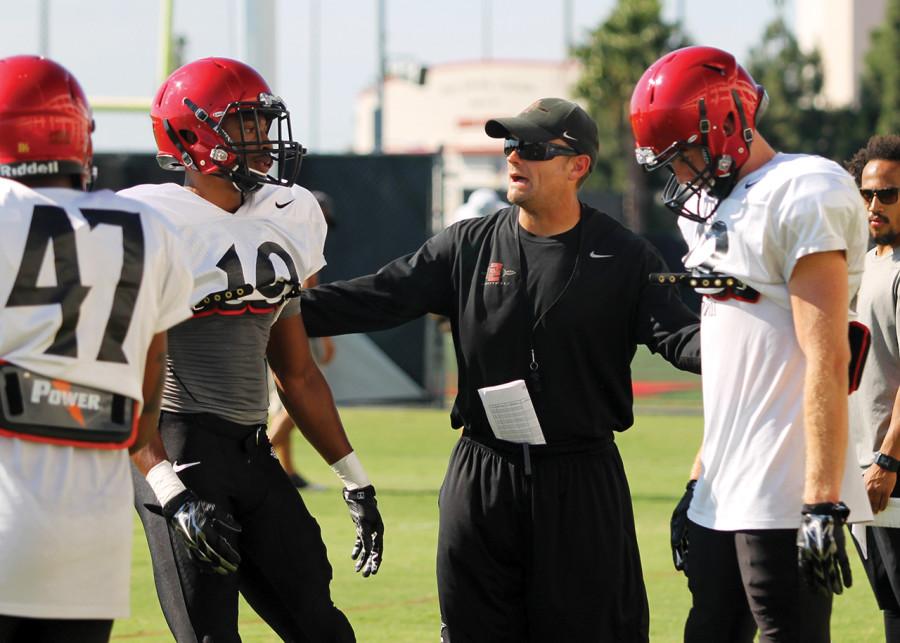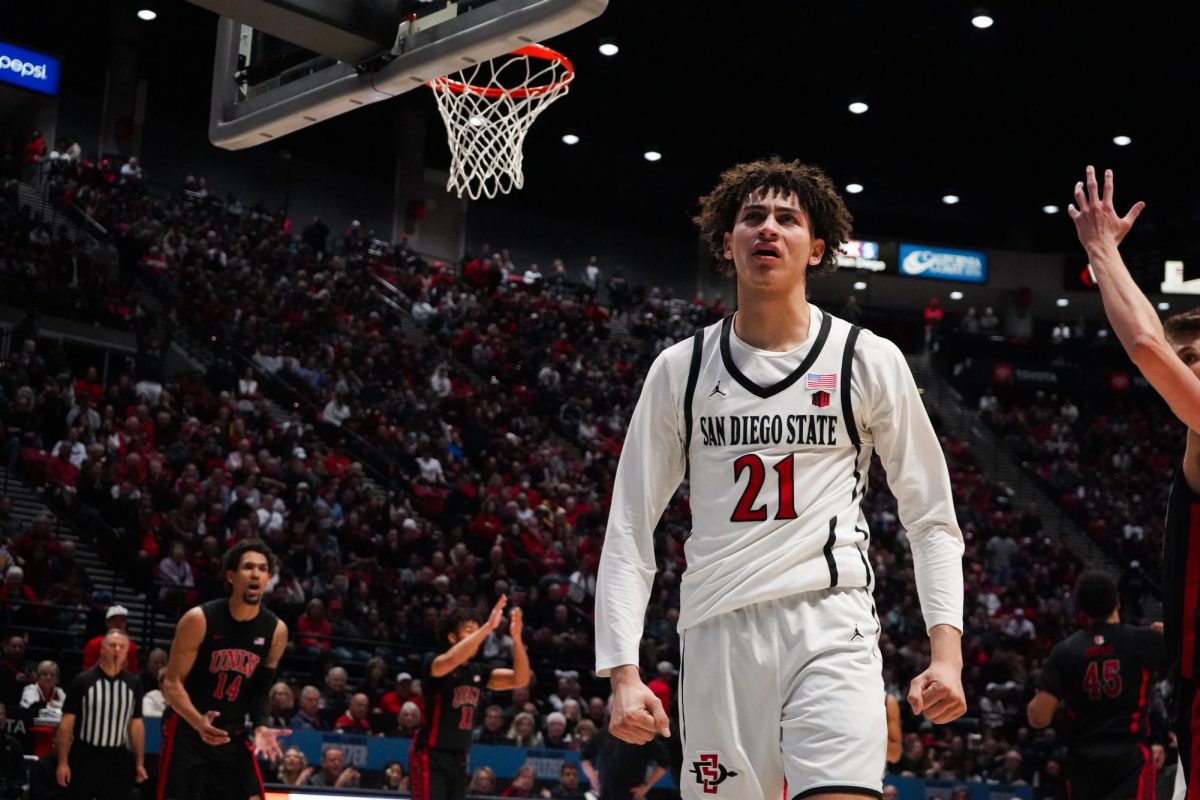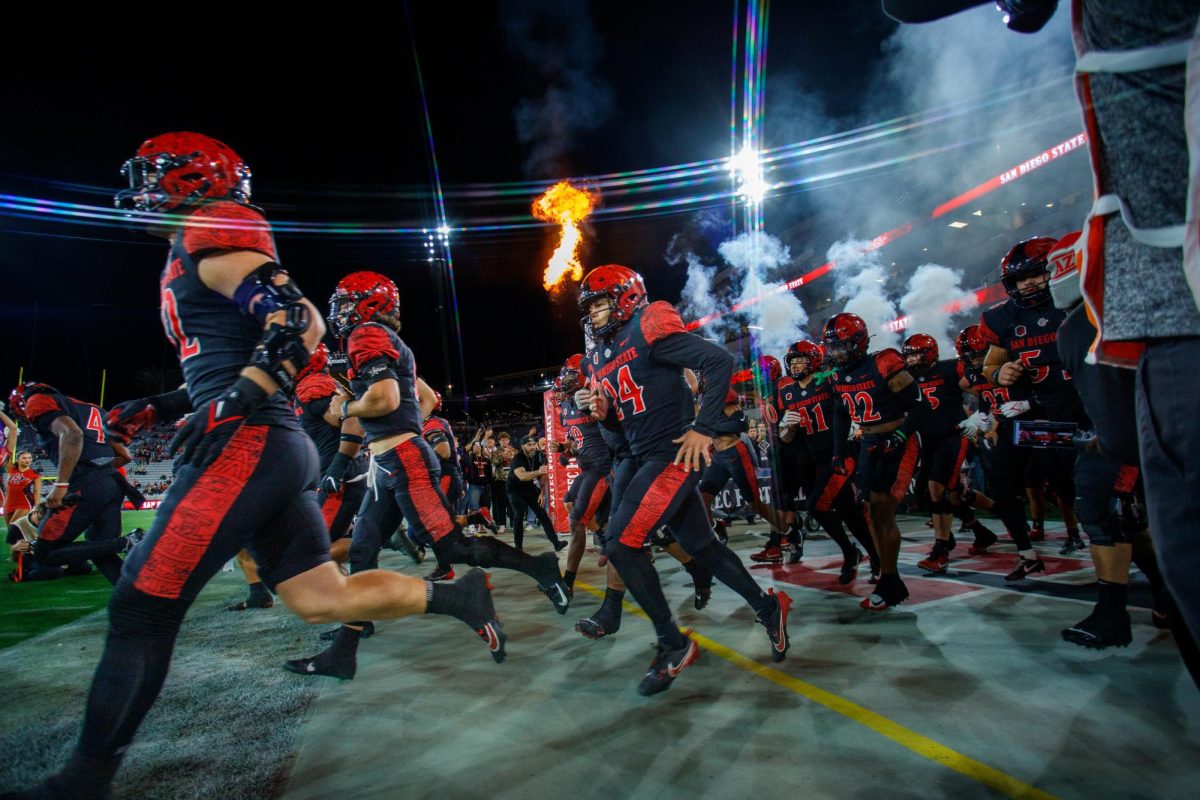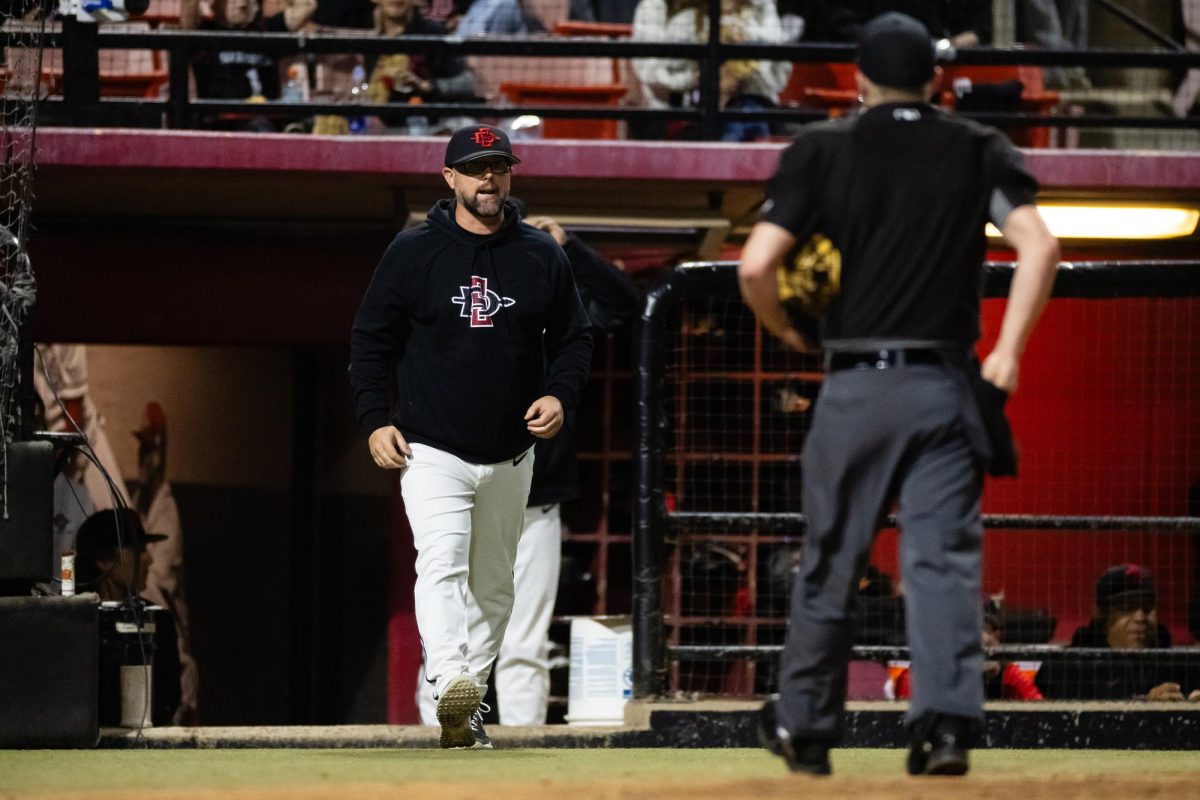One day during San Diego State football practice, sophomore linebacker Jay Henderson swatted a pass down at the line of scrimmage during skeleton drills, which are 7-on-7 with no tackling.
Fans at an actual game would’ve received the play with applause.
SDSU linebackers coach Zach Arnett wasn’t thrilled. Instead, he screamed at Henderson for not covering the tight end in the flat.
Football is a violent sport with a lot of moving parts that can get complicated very fast.
It requires near-flawless execution by all 11 players on the field, so it’s common for coaches to scream at players for simple things, such as lining up wrong or not watching the quarterback’s eyes.
Even when a player thinks he’s made a good play, a coach might yell at him.
Except with Danny Gonzales, SDSU’s safeties coach.
Gonzales differs from the other coaches in the calm way he talks to his players.
“I think there’s a difference between yelling at people and yelling to people,” he said. “I learned as a kid if you get yelled at, you tune things out.”
There’s a good argument that Gonzales’s coaching strategy has worked.
Gonzales’ time with the Aztecs goes like this: When he became the safeties coach in 2011, SDSU led the Mountain West with 15 interceptions. It was also No. 1 overall defense in the MW.
The next year, safeties recorded half of SDSU’s interceptions. But statistics alone don’t sell SDSU as a first-rate destination for potential safety recruits.
“Look at his resume and all the guys he’s put in the league,” redshirt-sophomore safety Trey Lomax said.
In 2014, the New York Giants drafted Nat Berhe in the fifth round and Eric Pinkins was a sixth-round pick of the Seattle Seahawks.
Gabe Lemon and Rene Siluano are two other safeties who were prolific at SDSU, but neither found on-field success after college.
The three projected starting safeties this year are all returning starters and none of them are seniors: Lomax and juniors Na’im McGee and Malik Smith.
Lomax is a calm, smart defender with good football instincts and near-immediate reaction speed, honed by his baseball career as an outfielder.
He understands how important it is for the safeties to stay calm and process all the mayhem that happens on the football field.
Lomax said Gonzales is good for the group and that he’s the most relaxed coach on the staff.
“It takes a lot to get him fired up and for him to really jump on you,” Lomax said.
That’s not to say Gonzales never yells during practice or games. After all, he’s a football coach and he’s been doing it for a while.
“I can be loud, I mean I try to get them to run to the ball and get my point across,” he said.
Gonzales is entering his fifth season coaching at SDSU and he’s been working with head coach Rocky Long for almost 17 years.
Gonzales learned how to reach his players from his boss: head coach Rocky Long.
“(Long) knows when it’s time to yell at them and when it’s time to build their confidence up, and I think that’s huge,” Gonzales said.
He strives for teaching moments.
“I try not to yell at them and berate them, I mean it’s easy to get tuned out,” Gonzales said. “The more you talk to them in a calm manner the more they tune into you.”
One such example happened one day in practice, although it wasn’t by Gonzales, but junior Malik Smith, a player with a rough history.
After freshman defensive back Jeff Clay made a defensive error at practice while in coverage, Smith waited for Clay to get back to the sideline and then gave him some advice.
In Smith’s case, Gonzales’ calmness and teacher-like instincts appealed in another way.
Smith is from Compton, and he said it’s exactly how it’s portrayed in movies: guns, gangs and violence.
SDSU was the first to recruit Smith and that’s when Gonzales stood out.
“He’s not just a football coach, he cares about what’s going on with the family back home,” Smith said. “You don’t find that a lot. A lot of coaches just want to coach on the field and then go about their business.”
This year’s group of safeties is highly touted and could help SDSU in its quest for a conference championship. They’re also helping Gonzales not lose his voice.
“I don’t have to yell as much as when they were young,” Gonzales said with a smile.
Granted, if the secondary makes as big of an impact as the coaches think, Gonzales might still lose his voice from happiness on game day.







